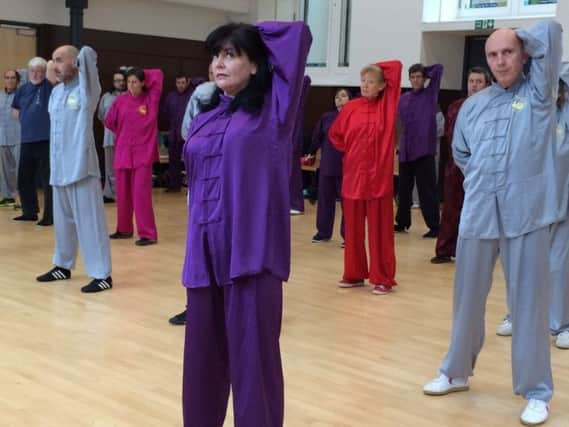Tai Chi '˜better than aerobic exercise' for chronic pain relief


But park the preconceptions, for Tai Chi is now believed to be as good or better than more rigorous forms of aerobic exercise for managing the symptoms of chronic pain.
Findings published in the British Medical Journal suggest the discipline is an important alternative strategy for patients with fibromyalgia - a long-term condition that causes widespread body pain.
Advertisement
Hide AdAdvertisement
Hide AdIt also leads to extreme tiredness, muscle stiffness, difficulty sleeping and depression and affects around 2-4% of the adult population worldwide.
Aerobic exercise is currently recommended as a standard treatment, but many patients find it difficult to exercise due to fluctuations in symptoms. Some trials have suggested that tai chi alleviates pain and improves physical and mental health in patients with fibromyalgia.
So to investigate further, a team of US researchers set out to compare the effectiveness of tai chi with aerobic exercise and to test whether this depends on its frequency or duration.
They identified 226 adults with fibromyalgia who had not participated in tai chi or other similar types of complementary and alternative medicine within the past six months. The average age of participants was 52 years, 92% were women, 61% were white, and average duration of body pain was nine years. At the start of the trial, participants completed the fibromyalgia impact questionnaire (FIQR), which scores physical and psychological symptoms such as pain intensity, physical function, fatigue, depression, anxiety, and overall wellbeing. Participants were then randomly assigned to either supervised aerobic exercise twice weekly for 24 weeks or to one of four tai chi interventions: 12 or 24 weeks of supervised tai chi completed once or twice weekly. Changes in symptom scores were assessed at 12, 24 and 52 weeks and participants were able to continue routine drugs and usual visits to their physicians throughout the trial. FIQR scores improved in all five treatment groups at each assessment, but the combined tai chi groups improved significantly more than the aerobic exercise group at 24 weeks. Tai chi also showed greater benefit when compared with aerobic exercise of the same intensity and duration (twice weekly for 24 weeks).
Michaela Sinclair, principal instructor for Scotland Tai Chi said: “It’s not like aerobic exercise where you can sometimes be putting strain on the joints, so there’s no strain and your still working the body but the skeleton structure is only as good as the muscles and the tendons that support it. If you work on the muscles and the tendons then they’ll support the bones and the rest of the body. I would encourage people because Tai Chi is beneficial to all age groups, from all walks of life. It’s working in a mindful way, that’s concentrating the movements with the breath and the focus of the mind. The body, the breath and the mind is the kind of trinity connected together - working on all levels.”
The authors of the study wrote: “Tai chi mind-body treatment results in similar or greater improvement in symptoms than aerobic exercise, the current most commonly prescribed non-drug treatment, for a variety of outcomes for patients with fibromyalgia.”